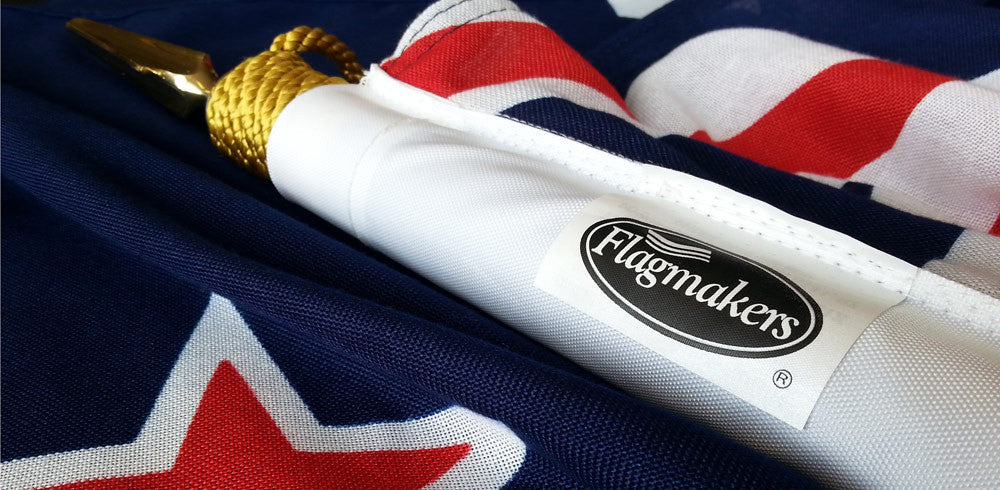To be effective, exterior flags must be seen to be “flying", and for this reason they are not made from heavy materials, which would only hang down against the flagpole in all but the most severe conditions. If a flag is “working’, eventual wear is inevitable, and must be expected. Like flower displays, flags are designed to be attractive and eye-catching - but ultimately, their effective life will come to an end.
However, with some care, this wear can be significantly reduced, and the life of a flag extended dramatically.
Unfortunately, it is not possible to accurately define the “expected” life of a flag in terms of weeks, months or years. Many variables combine to limit the life of a flag, the prime ones being wind velocity, ultra violet light, rain, pollution, and the snagging of flags against sharp objects such as rough flagpoles, buildings, or coarse halyards. Similarly, the failure to promptly repair a flag showing signs of wear will limit its potential.
Two major causes of premature flag wear can be controlled. Flags which are flown continuously will naturally deteriorate more rapidly than those flown during daylight hours only. Flags cannot be seen at night unless floodlit, but wear and tear continues. Flags flown for a period of say, 8 hours a day, can typically be expected to last around three times as long as those flown 24 hours a day.
New Zealand is a windy country, and while ensuring that flags spend most of the time flying, strong winds do accelerate wear. Consequently, in particularly strong winds it is recommended that flags are taken down. If necessary, a smaller (storm) flag can be flown which will suffer less, or alternatively, another used or previously repaired flag can be flown, on which wear is less important.
Some flag users operate two flags per flagpole, flying only one at a time, but rotating them on say, a monthly basis. This ensures that each flag can be regularly checked, laundered and repaired if necessary, ensuring only an attractive well maintained flag is visible at all times.
The type of fabric a flag is constructed from also has a bearing on its durability. Flagmakers Polyknit and Polybunting are the two main types of specialist flag fabric used, and each has its own unique characteristics. Polyknit is a lighter, shinier fabric than Polybunting, and is often chosen for its fine appearance. For windy conditions however, Polybunting will often prove more durable for flags (Polyknit remains more suitable for Streetfiags however, as they utilise Flagmakers ‘hemless’ finishing on their outer edges).
It is interesting to note the U.S. Government’s expectation of flag life. This states a flag should last approximately 90 days - based on daily usage during daylight hours only and not during periods of inclement weather! The performance of Flagmakers flags vastly exceeds this criteria!
In summary, to ensure the best performance from your flag:
- Don’t fly flags at night, they can’t be seen (unless floodlit) but the wear continues.
- Avoid flying in high winds - be sure the flag is not striking projections, or catching on a rough flagpole or fittings.
- Frayed or torn hems should be re-trimmed (Polyknit) and re-hemmed (Polybunting) as soon as possible.
- Dirt and pollution discolour flags and hasten wear. Washing (machine or hand) will revive their lustre, and ironing is a worthwhile finishing touch - use a polyester setting, but do not iron the headers (or sleeves).
- Ensure flags are dry before storing, to avoid creases and mildew.
- Choose the best specialised fabric to suit the conditions.
- Consider operating two flags per flagpole, with a monthly “flag day”.
- If lowering your flag at night is not practical, accept that faster wear and tear is inevitable.

